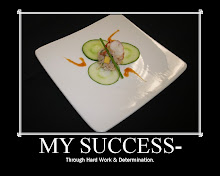According to my pre-knowledge of this article I was taught to boil water to a rolling boil before adding pasta. I was also told at least two galloons of water per each pound of pasta. According to the article by McGee my grandmother was off by a long shot.
Harold McGee stated traditionally four to six quarts should be brought to a full rolling boil, then well salt the water The reasoning is “the usual rationales are that abundant water quickly recovers the boil when the pasta is added, gives the noodles room so that they don’t stick to one another, and dilutes the starch they release, so they don’t end up with a ‘gluey’ surface.”
McGee believes that it is possible to cook pasta successfully with less water then the traditional. The rough figures McGee stated says if we all cut our pasta water, it would be between 250,000-500,000 barrels of oil, or $10 million to $20 million at current prices.
To break down pasta cooking…
Traditional Cooking Experimental cooking
4 to 6 qts of water 2 qts of water
Rolling boil cold temp
Salted 2 teaspoons salt
1# pasta 1 #Pasta
My Detective Work…
I tested this theory on my slowest day at the JWU Radisson I took two identical pots and heated four quarts of water in one then six quarts in another, both received two tablespoons of salt and two pounds of dry pasta instead of going with a subjective analysis like McGee, I decided to go along with a more scientific approach. I cooked the pasta until equally done (al denté). From there I decided to weight the pasta, granted I could not accurately determine the starch less versus water absorbed. In turn this was more for personal curiosity, but the two pounds of pasta did not vary in weight. What varied was the clearness or viscosity of the boiling liquid.
In analysis of food and its responsive behaviors we used a variety of equipment to determine differences in scientific experiments. In turn the pasta cooked with in the two quarts less of water (four quarts all day) had a Brix Refractometer reading of dark blue number four which means there was a high concentration of sugars. Where the pasta cooked in six quarts had a lighter blue reading of +2. In turn there were more sugars in the four quarts versus six quarts sample.
You may be saying that’s obvious there is less water so the particles pulled off less liquid to float around in. So as any scientific analyzing chef would do, I rebalanced the water contents. I did so by taking one cup of four-quart solution and added ½ cup water and blended it with an emersion (or stick) blender. Finally I reanalyzed the solution to find a dark blue reading of +3. In turn both pastas really aren’t the same although they tasted the same and were cooked to the same point.
Until later with a fun food based entry,
This is Jason Soko CC signing out,
Goodbye and Happy Cooking!
Friday, April 8, 2011
Subscribe to:
Post Comments (Atom)

No comments:
Post a Comment